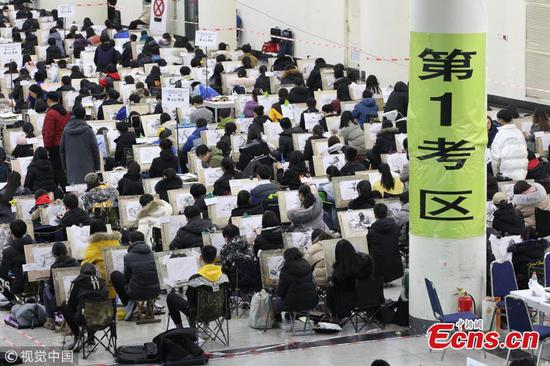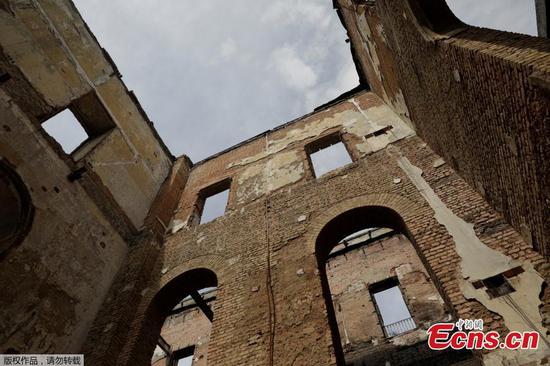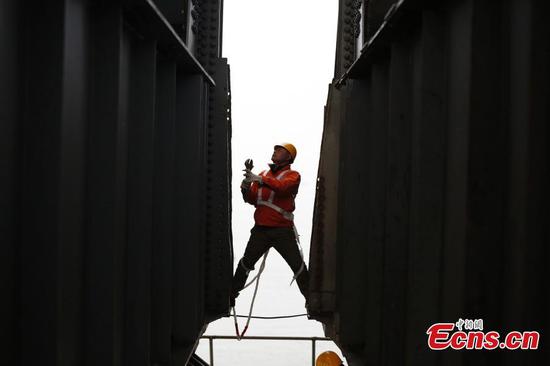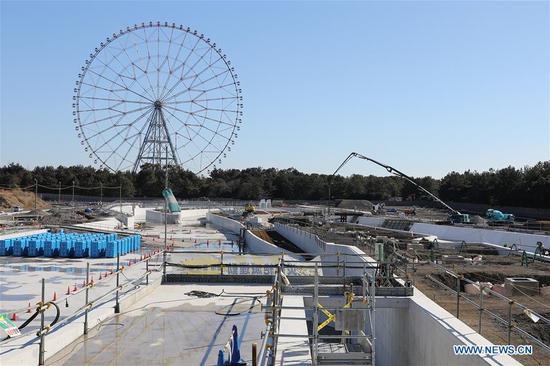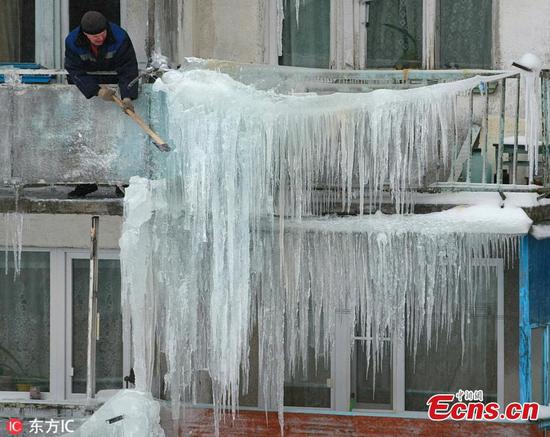
Technicians inspect production facilities at Sinopec's Fuling shale gas field in Southwest China's Chongqing municipality. (Photo/Xinhua)
The proportion of shale gas in China's energy mix is expected to grow continuously, leading analysts to forecast the development of the clean fuel will reduce China's dependency on energy imports and thus improve national energy security.
China has been heavily relying on oil and gas imports in recent years.
As the largest crude and gas importer worldwide, the country imported 440 million metric tons of crude oil in 2018, a year-on-year increase of 11 percent, and 125.4 billion cubic meters of gas, a year-on-year increase of 31.7 percent, according to figures from China National Petroleum Corp's Economics and Technology Research Institute.
The dependence ratio on foreign oil and gas reached 69.8 percent and 45.3 percent respectively, and is expected to continue rising in 2019, the institute said.
However, China's higher gas-consumption goals will be fulfilled by developing the shale gas sector, said Wang Lu, Asia-Pacific oil and gas analyst at Bloomberg Intelligence.
"Shale gas will play a big role in meeting China's gas demand," said Wang. "Shale gas output may reach 30 billion cu m by 2020, equal to 9 percent of the country's total gas consumption. The ratio can increase to 15 percent to 19 percent in 2030 as China reaches its target of producing 80 billion to 100 billion cu m of shale gas annually."
While the country boasts the world's largest recoverable shale gas resources, the shale fields, which usually lie deep underground, in densely populated mountainous regions, are more fractured. These challenges lead to higher costs and complications in drilling.
However, domestic oil companies have been making significant progress with drilling technology and cost cutting in recent years, as China vows to support the sector's development to shift its energy reliance from coal to gas.
According to Wang, fracking efficiency has enhanced by 50 percent and drilling time reduced by half, compared with the initial development period.
The cost of developing a shale gas well has been cut to 50 million yuan ($7.38 million), from 80 million to 100 million yuan in the industry's early stages. China has developed shale resources at depths of less than 3,500 meters, she said.
"To reach the nation's shale gas output targets for 2020 and 2030, the exploration depth needs to go deeper," Wang said.
According to energy consultancy Wood Mackenzie, 700 new wells will come onstream by 2020 at three key projects - Sinopec's Fuling shale gas field, and CNPC's Changning-Weiyuan field and Zhaotong field - all located in the country's southwest, with a total cost of $5.5 billion.
Considerable progress has helped to unlock shale gas' potential over the past decade. China's shale gas output was 9 billion cu m in 2017, accounting for 4 percent of the country's gas consumption, while the figures for 2014 were 1.3 billion cu m and 0.7 percent respectively, according to Wang.









